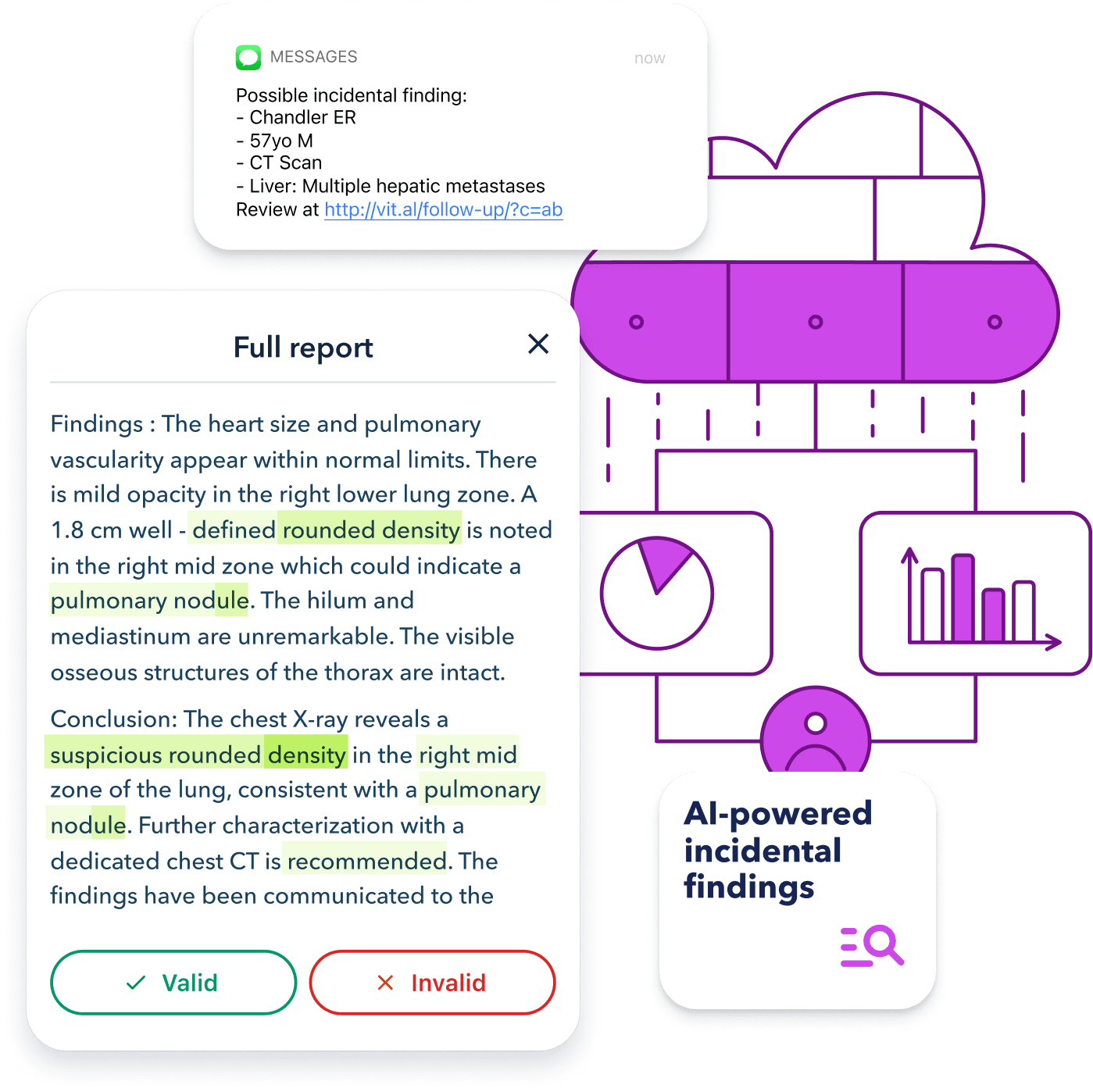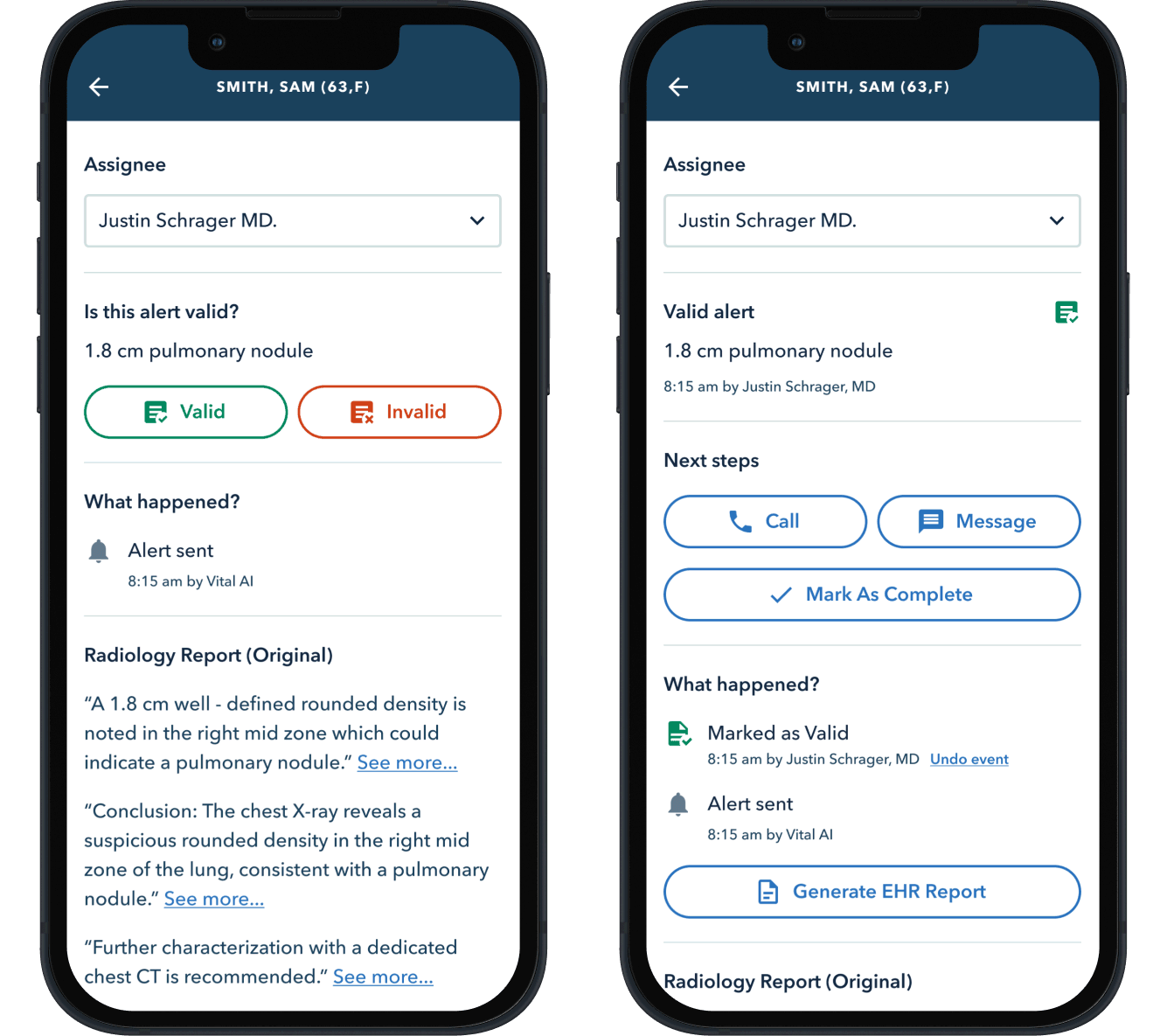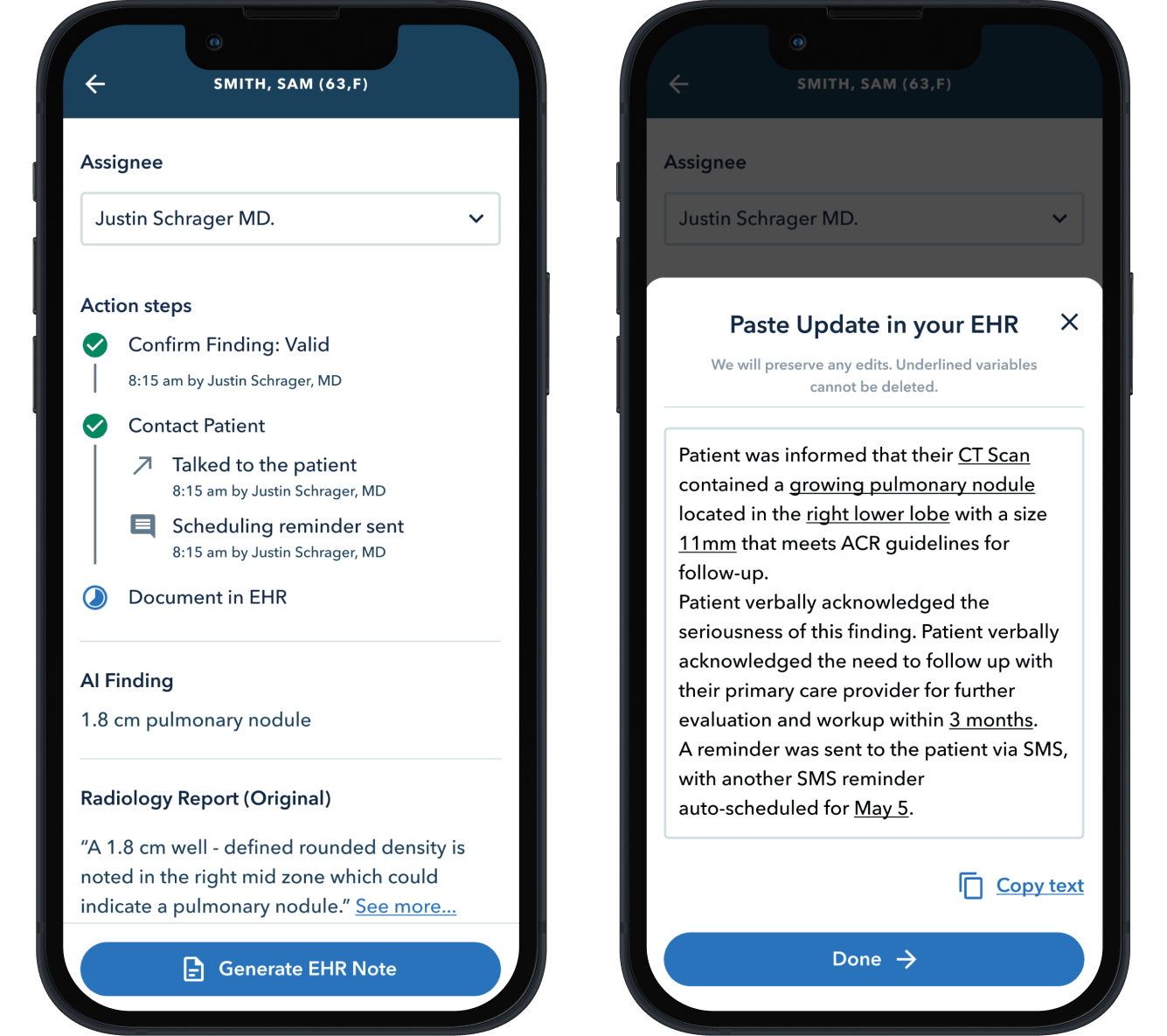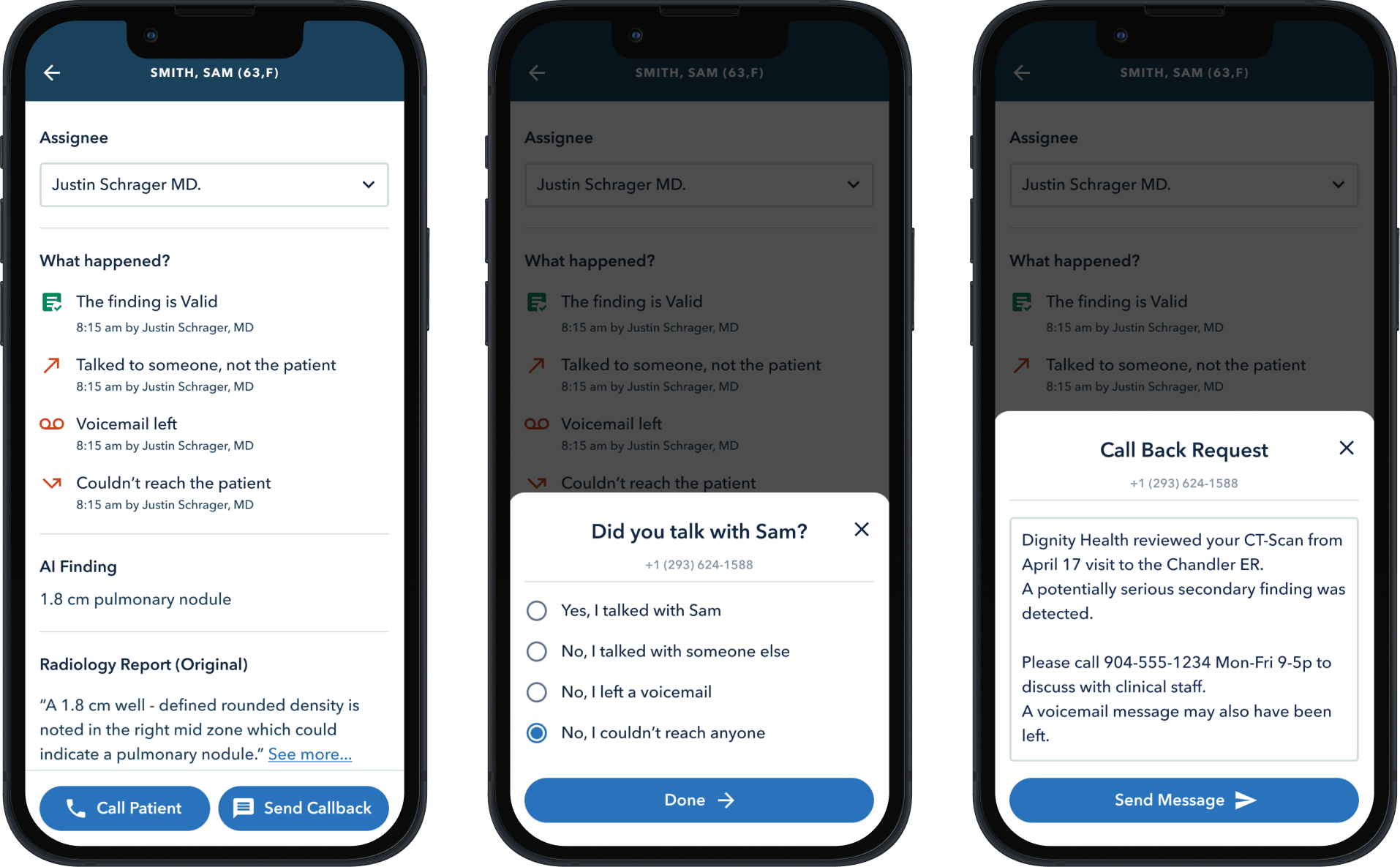
AI
AI can find a needle in the haystack
Incidental findings are those outside of what was primarily being looked for during radiology imaging

95%accuracy across modalities
+5FTEs saved vs. manual
+$750knew radiology follow-ups
AI can find a needle in the haystack
Incidental findings are those outside of what was primarily being looked for during radiology imaging. For example, you might be looking for a burst appendix (primary emergency) and just so happen to see a nodule on a kidney nearby. While not life threatening today, these findings need to be re-imaged and tracked over time.
Today, 60%+ of incidental findings have no scheduled follow-up. That’s a big loss in hospital revenue, and also a big loss for patients: if it is cancer, it could have been caught early.
Vital uses advanced natural language processing AI on the text of radiology reports to detect the 7-15% rate of incidentalomas. That’s far faster than a manual review.
Identify all the incidental findings with advanced AI
Vital uses language models custom trained on long clinical text to identify:
Neoplasms
Cardiovascular & peripheral vascular disease, aneurysms, osteoporosis, hepatic steatosis, portal hypertension, and other non-acute but important findings.
Asymptomatic hypertension, and abnormal labs like isolated elevated alkaline phosphatase or new signs of chronic kidney disease.
Real-time alerts for immediate intervention
An incidental finding can be alerted in near real-time (within minutes of a radiology report being marked final). This allows an emergency physician to speak directly with a patient before discharge. Alerts can be SMS, email or an EHR alert for those on FHIR connections.

Dramatically reduce the work load of the after care team:
Most incidental findings - as many as 90% in the ED - are not followed up on in real time. In some systems they are ignored (increasing liability), or at best, sent to an “after care” team who sifts through thousands of radiology reports for indicated follow-ups.
Vital streamlines the work of this after-care scheduling by scanning hundreds of thousands of radiology reports. Providers are only asked to confirm highly probably findings.

Streamlines patient contact
Once an incidental finding is confirmed, it’s required that a provider explain the seriousness of an incidental finding to the patient, and document the patient’s understanding. There are several possible scenarios:
Patient answer the phone and speaks to a provider
EHR text is auto-generated for documentation

Even for hard-to-reach patients
Only ~20% of patients answer calls from unknown numbers. A better approach is to request a call-back using a serious, but not-too-ominous text message. While these can be edited if a provider wishes, all of this communication happens with just a click or two.

Reduction in medical-legal liability
Many are self-insured (Emory, Envision).
Malpractice premiums are increasing.
The trend seems to be that malpractice caps are going away.
Statute of limitations are being increased for specific conditions (cancer).
A new source of radiology revenue
Today’s ~30% incidental finding follow-up rate can be increased to 50%. For an average hospital with 200 beds and 50,000 annual ED visits, we might expect 150,000 radiology reports, 10k of which have some incidental finding.
+20% x 10,000 incidents = 2,000 incremental new radiology orders
x $400 / radiology order
= +$800k
Good for patients
ACR & ACEP recently appointed a committee to recommend best practices, which underscored the importance of incidental finding communication, patient-facing language, and tracking systems…
Actionable incidental findings are common in emergency department imaging and present unique challenges in reporting, communication, and ensuring appropriate follow-up … standard practices for communication between clinicians and patients and among clinicians are important when actionable incidental findings occur in emergency department imaging … communication and follow-up of actionable incidental findings in emergency department imaging represent a systems issue that can be enhanced through use of informatics and tracking systems. - Moore et al. 2023
